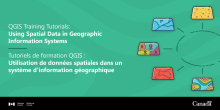RI_534
Type of resources
Available actions
Topics
Keywords
Contact for the resource
Provided by
Formats
Representation types
Update frequencies
status
-
City of Trois-Rivières sewer pipe network**This third party metadata element was translated using an automated translation tool (Amazon Translate).**
-
City of Trois-Rivières network valves**This third party metadata element was translated using an automated translation tool (Amazon Translate).**
-

AAFC’s Canadian Ag-Land Monitoring System (CALMS), operational since 2009, was developed by AAFC’s Earth Observation Service (EOS) to deliver weekly NDVI-based maps of crop condition in near-real-time. The CALMS uses data collected by the Moderate Resolution Imaging Spectro-radiometer (MODIS), a sensor mounted onboard NASA’s Terra satellite that has been acquiring data since February 2000. The state-of-the-art radiometric, spectral and spatial resolutions of MODIS Terra make it particularly well-suited for large-scale vegetation mapping and assessment. Crop condition (NDVI) maps are generated weekly by AAFC throughout Canada’s growing season, the period defined as the six-month period stretching from the start of Julian week 12 (end of March) to the end of Julian week 44 (late October). Weeks of the year are defined according to the ISO 8601 week-numbering standard, where weeks start on a Monday and end the following Sunday. CALMS products are generated in the MODIS native Integrated Sinusoidal (ISIN) projection for the region covering the twelve MODIS tiles h09v03 to h14v03 and h09v04 to h14v04.
-
City of Trois-Rivières flow control valve**This third party metadata element was translated using an automated translation tool (Amazon Translate).**
-
Road network of the City of Trois-Rivières.**This third party metadata element was translated using an automated translation tool (Amazon Translate).**
-
City of Trois-Rivières pressure reduction valves**This third party metadata element was translated using an automated translation tool (Amazon Translate).**
-
Sewer manholes in the city of Trois-Rivières.**This third party metadata element was translated using an automated translation tool (Amazon Translate).**
-

The Oil and Gas Rights dataset contains the digital boundaries for existing exploration licences, significant discovery licences, production licences, former permits, former leases and the Norman Wells Proven Area. These boundaries are available for download on the Northern petroleum pesources Website at https://www.rcaanc-cirnac.gc.ca/eng/1100100036087/1538585604719. The Oil and Gas Rights dataset is Crown-Indigenous Relations and Northern Affairs Canada (CIRNAC) and Indigenous Services Canada (ISC) primary source for northern petroleum titles geographic location on maps.
-

Have you ever wanted to create your own maps, or integrate and visualize spatial datasets to examine changes in trends between locations and over time? Follow along with these training tutorials on QGIS, an open source geographic information system (GIS) and learn key concepts, procedures and skills for performing common GIS tasks – such as creating maps, as well as joining, overlaying and visualizing spatial datasets. These tutorials are geared towards new GIS users. We’ll start with foundational concepts, and build towards more advanced topics throughout – demonstrating how with a few relatively easy steps you can get quite a lot out of GIS. You can then extend these skills to datasets of thematic relevance to you in addressing tasks faced in your day-to-day work.
-

FluWatch is Canada's national surveillance system that monitors the spread of flu and flu-like illnesses on an on-going basis. Activity Level surveillance is a component of FluWatch that provides an overall assessment of the intensity and geographical spread of laboratory-confirmed influenza cases, influenza-like-illness (ILI) and reported outbreaks for a given surveillance region. Activity Levels are assigned and reported by Provincial and Territorial Ministries of Health. A surveillance region can be classified under one of the four following categories: no activity, sporadic, localized or widespread. For a description of the categories, see the data dictionary resource. For more information on flu activity in Canada, see the FluWatch report. (https://www.canada.ca/en/public-health/services/diseases/flu-influenza/influenza-surveillance/weekly-influenza-reports.html) Note: The reported activity levels are a reflection of the surveillance data available to FluWatch at the time of production. Delays in reporting of data may cause data to change retrospectively.
 Arctic SDI catalogue
Arctic SDI catalogue
